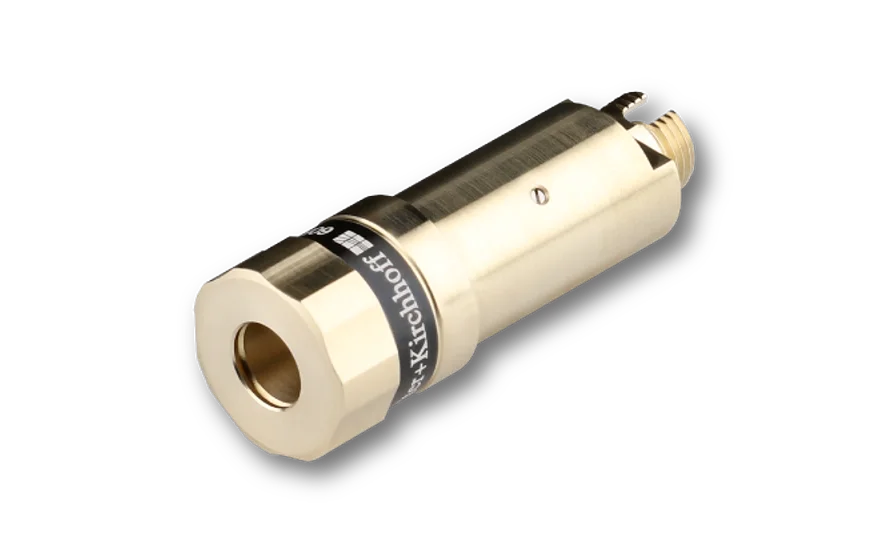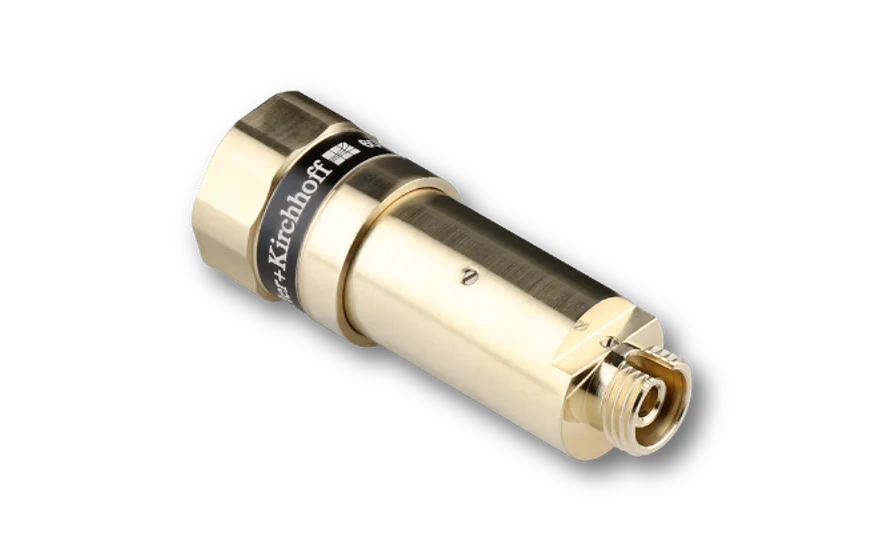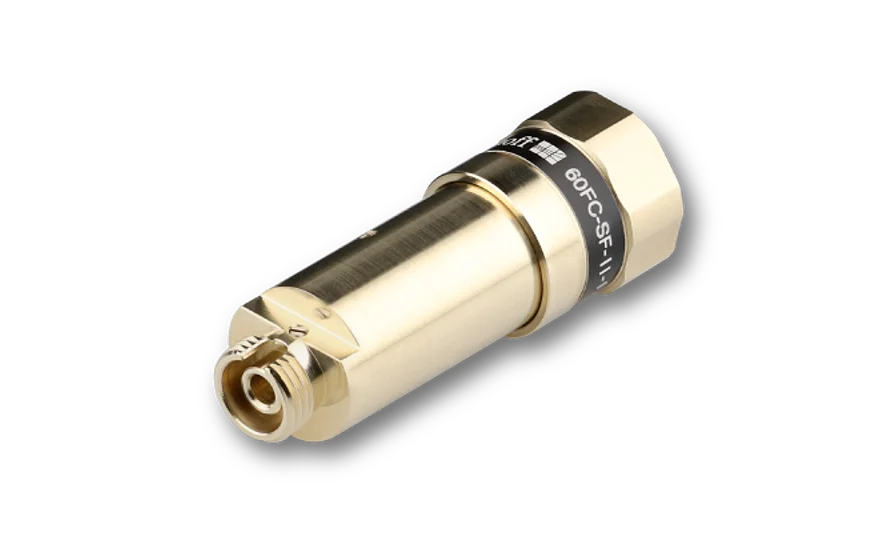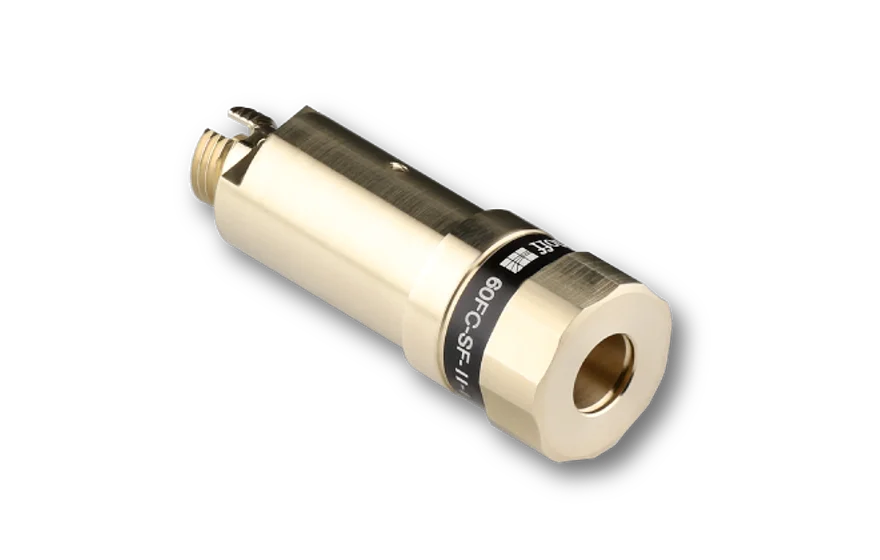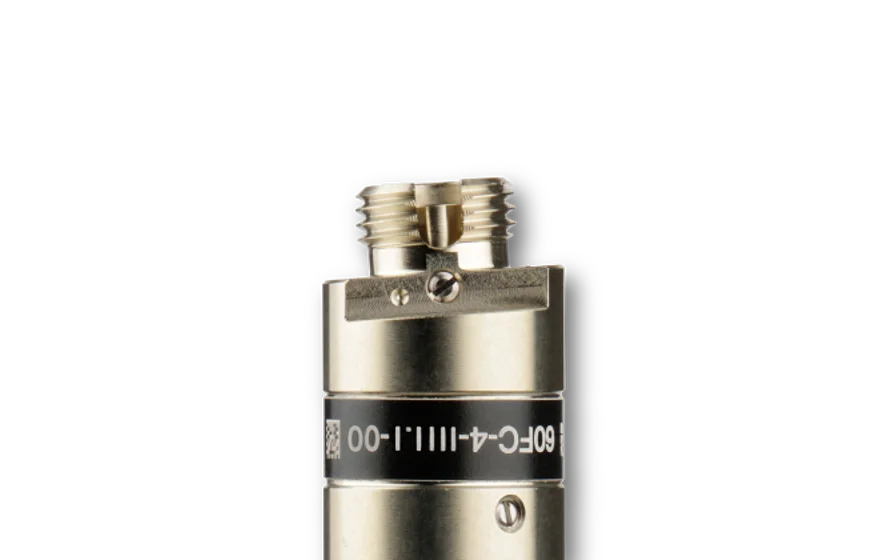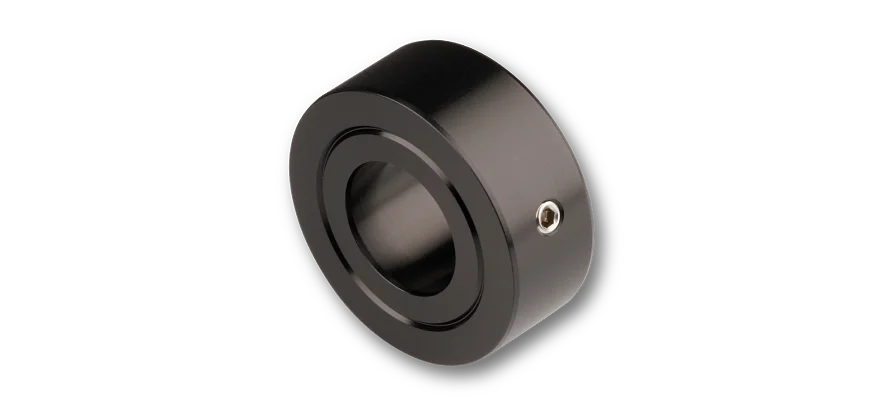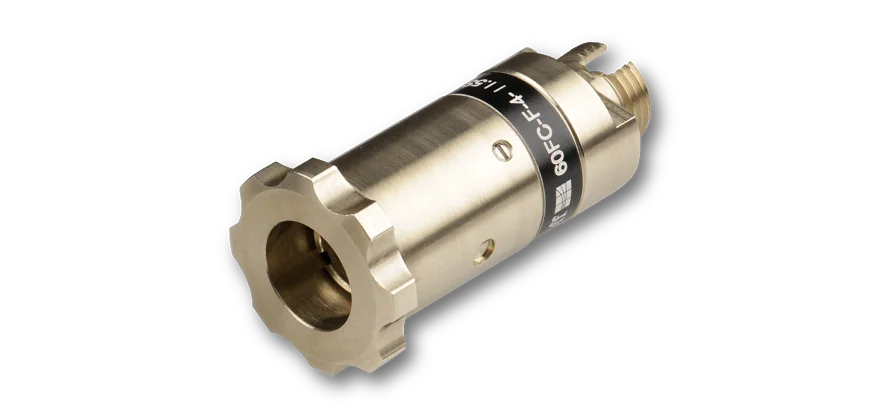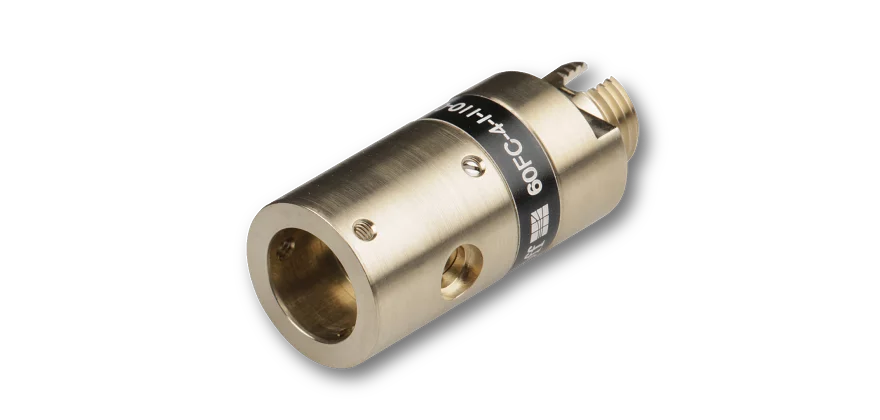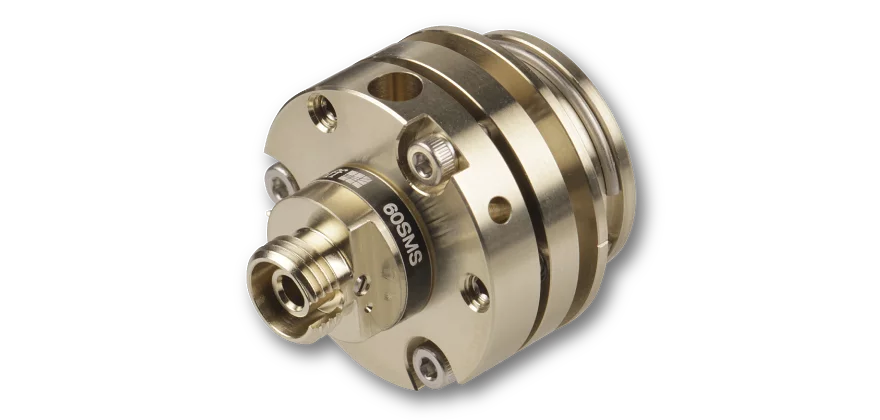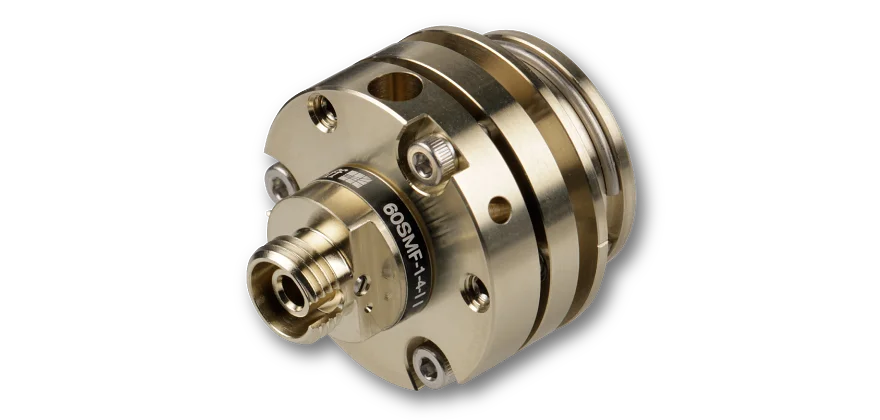The fiber collimators series 60FC-SF with super-fine thread are an improved, advanced version of the series 60FC-F collimators. They are designed for collimating radiation exiting optical fiber cables with high pointing stability. They can also be used in reverse-mode as fiber incouplers. They are suitable for single-mode and polarization-maintaining fiber cables leading to collimated beams with a Gaussian intensity profile.
An optics for each application
A large variety of collimating optics allows that the optimum focal length and the best lens type for a single wavelength (asphere, monochromat) or a wavelength range (achromat) can be selected for each application. All lenses are AR-coated. For an ideal Gaussian beam and standard fibers you can reach coupling efficiencies up to 80%.
Adjustment of focus
The distance between fiber end-face and collimating optics is adjusted using a threaded ring with a super-fine thread. The improved mechanics lead to an increased pointing stability and reduced backlash during the focus setting. The lens in these fiber collimators is spring-loaded. The linear bearing ensures that the lens does not rotate when adjusting the focus.
Please note:
Please do NOT use the two radially arranged screws. These pin screws are now used for a different purpose in the 60FC-SF fiber couplers than for the previous version of the fiber couplers with fine-focusing mechanism 60FC-F.
They are to be used by Schäfter+Kirchhoff only! They are used for adjusting the backlash of the fine adjustment mechanics and are NOT used for fixing the collimation setting.
Optimum lens performance
The angled polish of connectors of type APC is considered by a pre-angled mechanical coupling axis that compensates the beam deflection and you can use the lens centrically. This minimizes aberrations simply resulting from a non-ideal beam path through the lens.
Connector Type
The fiber collimator can be equipped with FC PC (wide key*), FC APC (wide key*) receptacles. Because of the spring loaded ferrule the fiber coupler has an additional grub screw to increase pointing stability. *Even though the fiber coupler has a wide key receptacle it still can be used with both narrow key and wide key fibers. More information can be found here.
Material
The fiber collimators are available in eco brass ®.
Mounting
The collimator can be placed into a standard mirror mount using the corresponding adapters. A list with mounting options can be found here.
